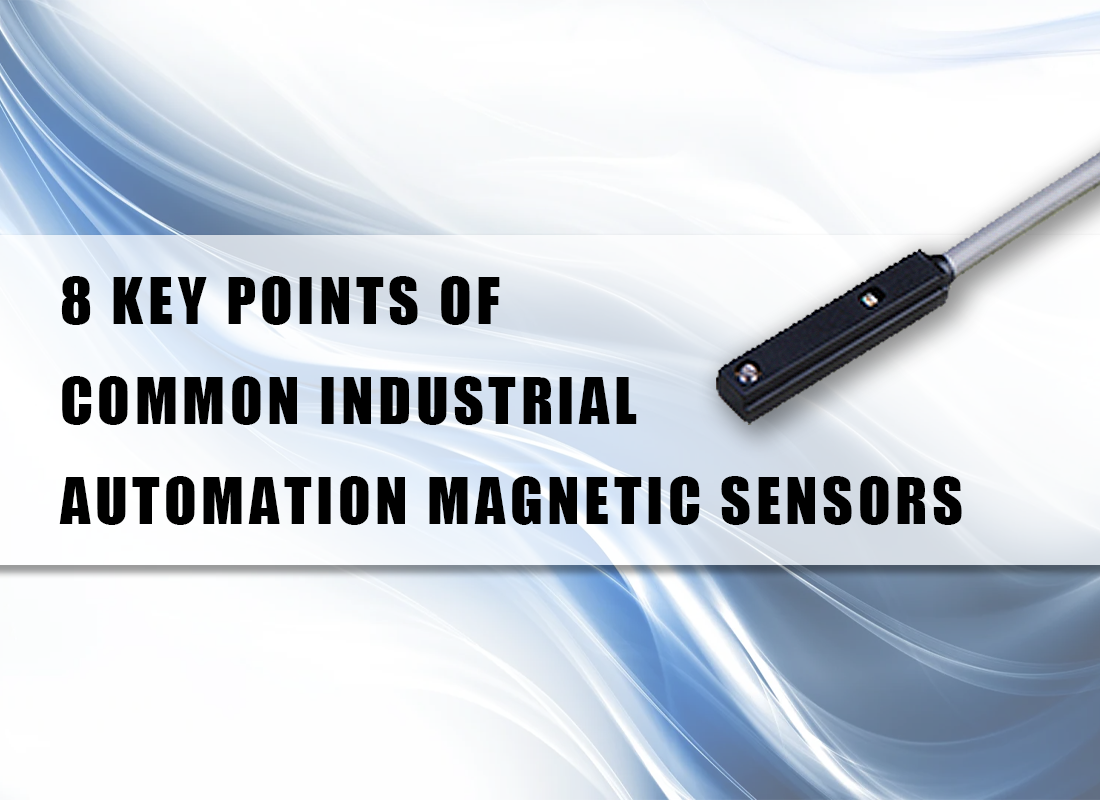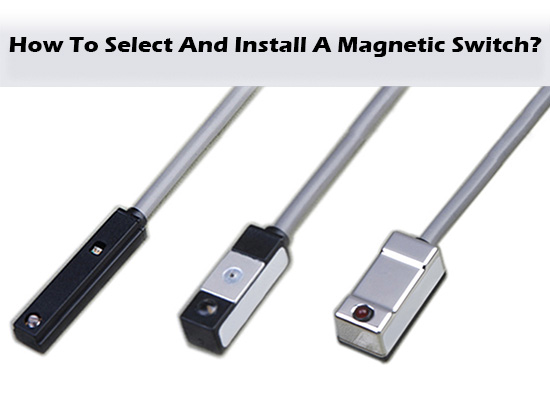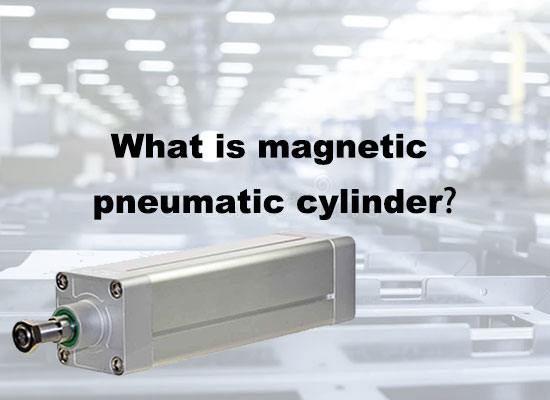Oct 29, 2025
In pneumatic industrial automation, compressed air is used to achieve energy conversion and mechanical motion output, in which the piston rod or magnetic coupling slider drives the load.For complex pneumatic circuits, motion detection of each key pneumatic component becomes important especially for cylinder.It is not only used for detecting abnormal states but also serves as the reference signal for the control system.
In the entire pneumatic system, magnetic sensor switch provides position, status, and motion detection, ensuring precise control, safety protection, and efficient operation in industrial manufacturing.
The magnetic sensors are usually embedded inside the piston of the pneumatic actuator to detect the position changes during piston movement. The types of sensors used in pneumatic actuators are as follows:
Reed Sensor:
This type of magnetic position sensor is one of many types of sensor switches, also known as a limit magnetic switch.Inside a small glass tube, there are two separated metal reeds that mechanically open or close.When a magnetic field approaches, the metal reeds are attracted by the magnetic force and close together, completing the circuit.
Reed magnetic sensor can be used for cylinder stroke detection, limit sensor switch for valve and actuator, and linear slide table position detection.
Hall Sensor:
This type position magnetic sensor usually outputs either digital or analog voltage signals.Through the Hall effect, when a conductor or semiconductor is exposed to a magnetic field, a voltage change occurs, and the sensor converts that voltage change into an output signal.
Magnetoresistive Sensor:
This type works by detecting resistance changes, usually providing analog or digital signal outputs.
Magnetic sensors operate based on magnetic fields. They detect magnetic fields and generate electrical signals to determine position, speed, angle, or switch status.
This sensor magnetic limit glass tube mainly consists of two thin nickel–iron alloy reeds that do not touch each other.When an external magnet approaches, the reeds become magnetized and attract each other until the contacts close, making the circuit conductive.When the magnet moves away, the elasticity of the reeds separates the contacts again, returning to the open state.
When current passes through a conductor or semiconductor and a magnetic field is applied perpendicular to the current, the magnetic field exerts a Lorentz force on the moving charge carriers, causing them to deflect to one side.This creates a transverse voltage — known as the Hall effect.The output signal is positively correlated with the magnetic field strength; the stronger the magnetic field, the greater the output voltage.
Based on the magnetoresistive effect, when a magnetic field is applied, the motion of electrons in the material changes the resistance value.This resistance change is converted through a bridge or amplifier circuit into a continuous voltage signal that reflects the magnetic field strength or position variation.
Features:No internal circuit required, low cost, suitable for mass application, easy installation, stable and reliable in industrial environments.
Disadvantages: Mechanical contacts cause wear, slower response speed, not suitable for high-speed motion detection.
Features:No mechanical contact, no wear; stable for fast-moving cylinders or sliders; suitable for harsh environments.It can provide a digital signal (1 for magnetic field detected, 0 for no field) or an analog voltage signal (0–5V) representing field strength.
Disadvantages: Higher cost than reed sensors, requires power supply support.
Features:This sensor type detects magnetic field variation through resistance change.It has high measurement accuracy and can detect angular or micro-position changes.Commonly used in closed-loop control, precise position feedback, and high-accuracy automation systems.
Disadvantages: Sensitive to external magnetic interference, high cost, requires complex circuitry, and precise installation alignment.
Output signal type: Whether it outputs a digital signal (on/off) or an analog signal representing field strength.
Sensitivity and detection distance: Ensure the sensor can be reliably triggered within the target magnet's range.
Mounting method and space requirements: The sensors' size, mounting holes, and fixing method must match the pneumatic base components.
Environmental adaptability: Ability to operate under high temperature, dust, humidity, or vibration conditions.
Response speed and frequency: Choose Reed sensor switch for low-frequency operations and Hall sensor for high-frequency actions.
Electrical compatibility: Ensure Hall and Magnetoresistive sensors match the system's operating voltage.
Accuracy: Includes both numerical precision and magnetic alignment accuracy.
There are various types of magnetic sensors, but if the purpose is only to detect whether the piston rod within a stroke of several tens to hundreds of millimeters is in the “in-position” or “not-in-position” state, a Reed switch sensor is sufficient.
Reed switches have mechanical contacts that wear out and require periodic inspection or replacement;Hall and Magnetoresistive sensors have longer lifespans and lower maintenance requirements.
You May Interest In


Jan 13, 2024 Blog
How To Select And Install A Magnetic Switch?
Mar 13, 2025 Blog
What is Magnetic Pneumatic Cylinders?FOKCA ©1998-2025 Fescolo Pneumatic All Rights Reserved Sitemap